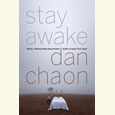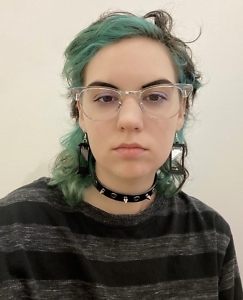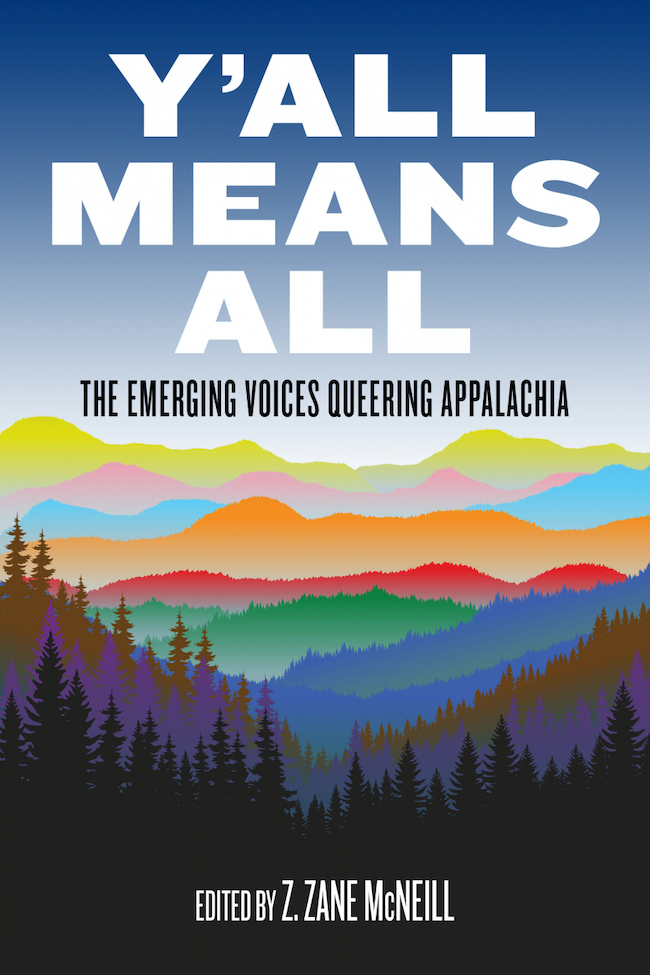The Birth of Black Power
Historian Aram Goudsouzian talks with Chapter 16 about the fiftieth anniversary of James Meredith’s March Against Fear
Fifty years ago this summer, James Meredith set out from the Peabody Hotel in Memphis on a walk through Mississippi. Meredith had famously integrated Ole Miss four years earlier, and now he was headed back into the state to “march against fear”—a one-man civil-rights protest. But he had barely set foot in Mississippi when a white gunman shot and wounded him severely.
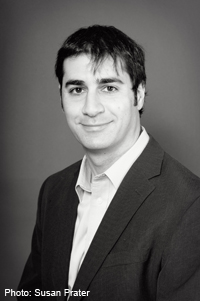 Instead of ending the march, though, the attempted assassination galvanized the civil-rights movement. At a time when the radical and establishment factions within it were splintering, groups like the Student Nonviolent Coordinating Committee and the NAACP jumped at the opportunity to unite in Mississippi. Hundreds of people—including Martin Luther King Jr. and James Brown—picked up where Meredith left off.
Instead of ending the march, though, the attempted assassination galvanized the civil-rights movement. At a time when the radical and establishment factions within it were splintering, groups like the Student Nonviolent Coordinating Committee and the NAACP jumped at the opportunity to unite in Mississippi. Hundreds of people—including Martin Luther King Jr. and James Brown—picked up where Meredith left off.
As Aram Goudsouzian, the chair of the history department at the University of Memphis, recounts in his book Down to the Crossroads: Civil Rights, Black Power, and the Meredith March Against Fear, the time it took the marchers to cover the 200 miles between Memphis and Jackson represents the unacknowledged turning point in civil-rights history, the last expression of movement unity. Goudsouzian recently spoke with Chapter 16 about the march and its meaning.
Chapter 16: Usually we think of the “heroic period” of the civil-rights movement as ending in 1964 or ‘65, with the signing of the civil rights and voting rights acts. But you make the case for the 1966 Meredith march as the real turning point. Why?
Aram Goudsouzian: Understanding the Meredith March can be one way to understand the larger civil-rights movement. It captures the creative ideas, glorious spirit, bitter rage, and dogged determination that characterized so much of the black struggle for freedom. It was a great, nonviolent mass demonstration in the vein of Birmingham or Selma, but it also showcased the radicalism that had lain under the movement’s surface.
It featured famous figures and national leaders, but it also highlighted the importance of a wide cast of characters, from the courageous grassroots activists who redefined American democracy, to the white segregationists who employed a variety of strategies to preserve their power, to the black Mississippians who supported the march by walking a few miles, feeding the marchers, or registering to vote. Finally, it is an extraordinary story, full of dramatic moments, both uplifting and chilling—including the shooting of James Meredith, the voter registration of a 106-year-old man who had been born a slave, Stokely Carmichael’s unveiling of the slogan “Black Power,” a mob attack in the town of Philadelphia, soaring oratory from Martin Luther King, a brutal tear gassing in Canton, and a climactic 15,000-person march through the streets of Jackson, the largest civil-rights demonstration in Mississippi history.
The Meredith March captures the creative ideas, glorious spirit, bitter rage, and dogged determination that characterized so much of the black struggle for freedom.
Chapter 16: The protest is still remembered as the Meredith march after James Meredith, even though he largely fell out of the picture after he was shot. What do you think he intended to achieve with the march?
Goudsouzian: James Meredith wanted a “walk” to Jackson, not a “march.” A march involved lots of people, including women and children, engaged in a mass protest. Meredith’s walk was for him and other independent men. He did not wish to endanger or inconvenience black Mississippians. After he was shot, the demonstration grew huge. It also imposed on local communities, veered from his planned route down Highway 51, and featured public debates about black politics. Meredith was furious! From his hospital bed in Memphis, and then while he recuperated in New York, he kept registering his distaste. He returned to Mississippi for the march’s final days, but even then he followed his own course: he abandoned a meeting of march leaders and led his own walk down Highway 51 from Canton to Tougaloo College, following his original plan.
Meredith may be the least understood figure in the American civil-rights movement. He had grandiose visions of destroying the entire system of white supremacy, but he had a strong independent streak, a deep respect for military order, and a traditional sense of manhood. He was a true conservative, in one sense, but he possessed a mystical sense of his destiny to change the world.
Chapter 16: One of the things I found interesting in your telling is how much of a grassroots, more or less spontaneous event the march became after Meredith was shot. Does that spontaneity say anything about where the movement was in the summer of 1966?
Goudsouzian: No experienced civil-rights leader would have ever devised the Meredith March. The previous year, the march from Selma to Montgomery had plenty of advance planning and took just four days. The Meredith March involved a constantly rotating cast, took three weeks, and covered 220 miles through racially hostile territory. Organizers had to arrange camping sites, bathrooms, medical services, food, and water. It was a logistical morass.
But somehow it worked. Centenary Methodist Church, the Memphis pastorate of James Lawson, served as a hub for all the volunteers flooding in from across the country. Black communities in small Mississippi towns served them food and lent them land, while local leaders helped coordinate voter registration rallies. The improvised response showed the flexibility of the march’s leaders, who worked together despite their ideological differences. More important, it illustrated that the foundation of the civil-rights movement was the “ordinary” black people—men, women, and children—who sacrificed to serve a greater cause.
Chapter 16: Another thing you get into at length is the internal politics of the march, with different factions and organizations jockeying for position—something, again, we often forget. How important were those political rifts and factions in the movement at the time, and were they ultimately for the better or worse?
Goudsouzian: The civil-rights movement had long featured political disputes and organizational rivalries. Different organizations had different philosophies for pursuing justice, from the NAACP’s hierarchical, legal approach to SNCC’s radical re-envisioning of democracy and leadership. This was a good thing. In any large social movement, you want grassroots activists who challenge the status quo, national spokesmen who frame the larger cause, and political operatives who enact change at the institutional level.
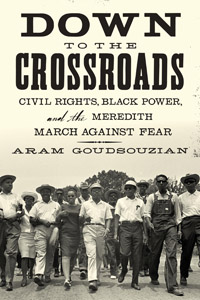 The difference, by 1966, was that political differences had stretched civil-rights organizations so far apart that it entered the public consciousness. These differences were natural, growing out of their larger experience in the movement, but they had consequences. The national offices of the NAACP and Urban League, for instance, refused to officially participate in the Meredith March because they could no longer work with the more radical organizations. Roy Wilkins of the NAACP wanted a march that lobbied for a civil-rights bill that was before Congress. Activists from SNCC and CORE, who were so closely connected to black people in the South, did not care about more civil-rights laws—they saw American society as essentially racist, and they demanded a march that registered voters and boosted local leaders, so they could develop their own power base.
The difference, by 1966, was that political differences had stretched civil-rights organizations so far apart that it entered the public consciousness. These differences were natural, growing out of their larger experience in the movement, but they had consequences. The national offices of the NAACP and Urban League, for instance, refused to officially participate in the Meredith March because they could no longer work with the more radical organizations. Roy Wilkins of the NAACP wanted a march that lobbied for a civil-rights bill that was before Congress. Activists from SNCC and CORE, who were so closely connected to black people in the South, did not care about more civil-rights laws—they saw American society as essentially racist, and they demanded a march that registered voters and boosted local leaders, so they could develop their own power base.
Chapter 16: The most important figure, of course, remains King, but even he was seeing a diminution of his prestige and standing in the movement, and the country. Why was that, and how did the march fit into his personal struggle?
The Meredith March revealed Martin Luther King at his finest, even as it tested him like never before. He was simultaneously planning an ambitious campaign in Chicago, where he hoped to apply nonviolent tactics to tackle racial barriers in a large Northern city, and serving as the central figure in this three-week march through Mississippi. He was the voice of moderation, balancing the militant impulses of the young radicals, offering statements that framed their quest as a noble ideal that reaffirmed American democracy. But he also spoke to the militants. During the walk through Mississippi, many activists had a chance to meet him and appreciate his character.
Without King, the march would have attracted much less attention from the national media and law enforcement. Moreover, black Mississippians flocked to the demonstration for the opportunity to see King, to hear him, to touch him.
The Meredith March changed King, too. For all the terror he had witnessed in his life, the state of Mississippi in 1966 exposed him to the depths of racist hatred. He later saw that same hate in Chicago, and it molded his evolving radicalism in the last years of his life. Just as important, he encountered people in Mississippi suffering from deep poverty. That experience shaped his vision for what became the Poor People’s Campaign, which compelled him to revisit Memphis in 1968, when he met his end.
Chapter 16: And of course, we can’t talk about the Meredith march without talking about Stokely Carmichael, who coined “black power” while on the trip and emerged as a national figure from it. How did the events of the march solidify the emergence of black power as a movement in its own right?
Goudsouzian: Black Power grew out of the civil-rights movement, even as it challenged some of the principles embodied by figures such as Martin Luther King. It reflected existing frustrations about how, despite the passage of civil rights laws, nothing had changed in black people’s daily lives, whether in the South or the North. Black Power, as Carmichael defined it at the time, was about creating unified, independent blocs of black voters, whether in the South Side of Chicago or the Mississippi Delta. It also meant taking pride in black history and culture, while recognizing the linked experiences of dark-skinned people across the globe.
It was the last great march of the civil-rights era, the last time the nation would see a coalition of black political organizations launch a sustained mass protest that captured the world’s attention and stimulated debates about black freedom.
Carmichael turned just twenty-five years old on the Meredith March, and he had just become chairman of SNCC. He was always charismatic and dynamic, but the march transformed him into a national celebrity—an heir of sorts to Malcolm X. He refused to soothe white anxieties, instead addressing the aspirations and anger of many African Americans. He served, by the end of the march, as a human embodiment of Black Power. The media gravitated to him and the slogan, which intensified the devotion of militants, the unease of liberals, and the hatred of conservatives.
Chapter 16: You say that the march was both the end and a beginning—what ended, and what was beginning, and why was the march so pivotal in both?
Goudsouzian: It was an end because it was the last great march of the civil-rights era. It was the last time the nation would see a coalition of black political organizations launch a sustained mass protest that captured the world’s attention and stimulated debates about black freedom.
It was a beginning because it was the birth of Black Power. Those ideas had been circulating and percolating, but the Meredith March identified it, gave it strength and attention, and built a sense of an emerging movement. When the Black Panthers formed in Oakland later that year, they could embrace the principles and style of Black Power. As a political and cultural movement, it helped define the era that followed.
Most important, though, is that the march was part of a long continuum. Black people were fighting for civil and human rights long before Martin Luther King ever led a bus boycott, and they continued well after he came to Memphis to help some striking garbagemen. It continues now. For those who are interested in creating a better world, the Meredith March can offer both positive and negative lessons.

Nashville native Clay Risen is the author of A Nation on Fire: America in the Wake of the King Assassination and American Whiskey, Bourbon and Rye: A Guide to the Nation’s Favorite Spirit. His new book, The Bill of the Century: The Epic Battle for the Civil Rights Act, appeared in spring 2014. He lives in New York, where he is an editor at The New York Times.

